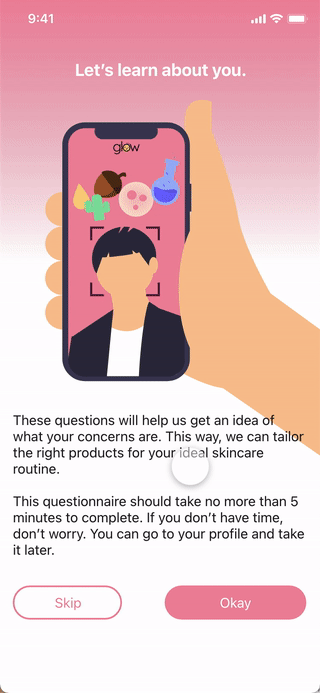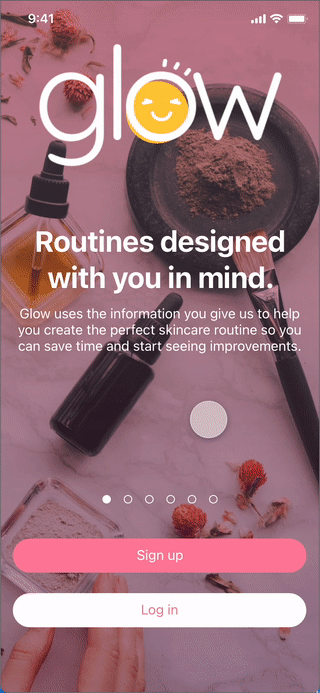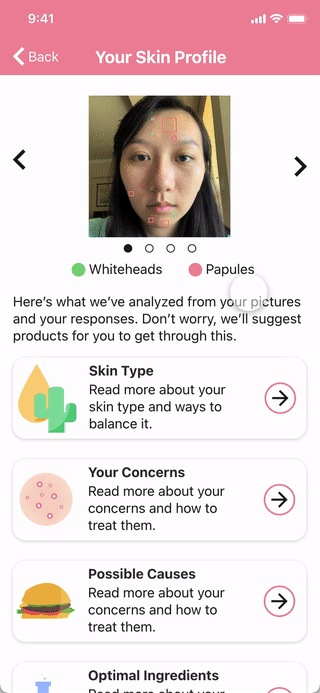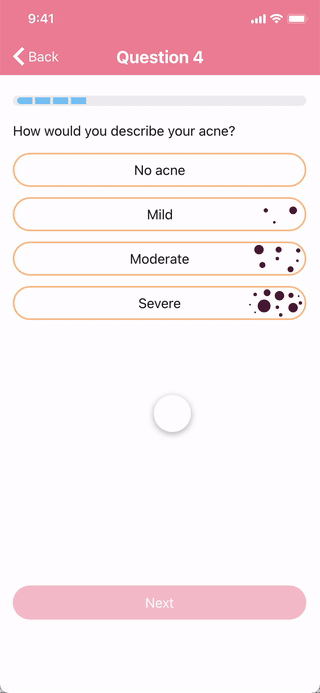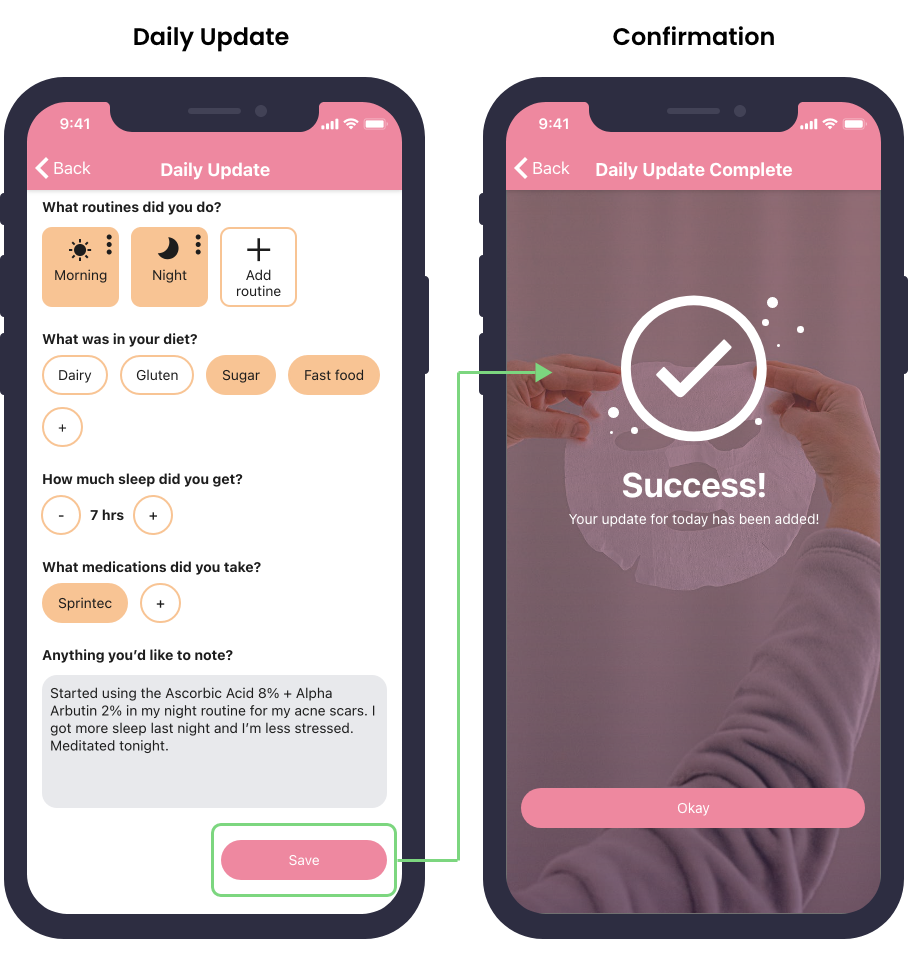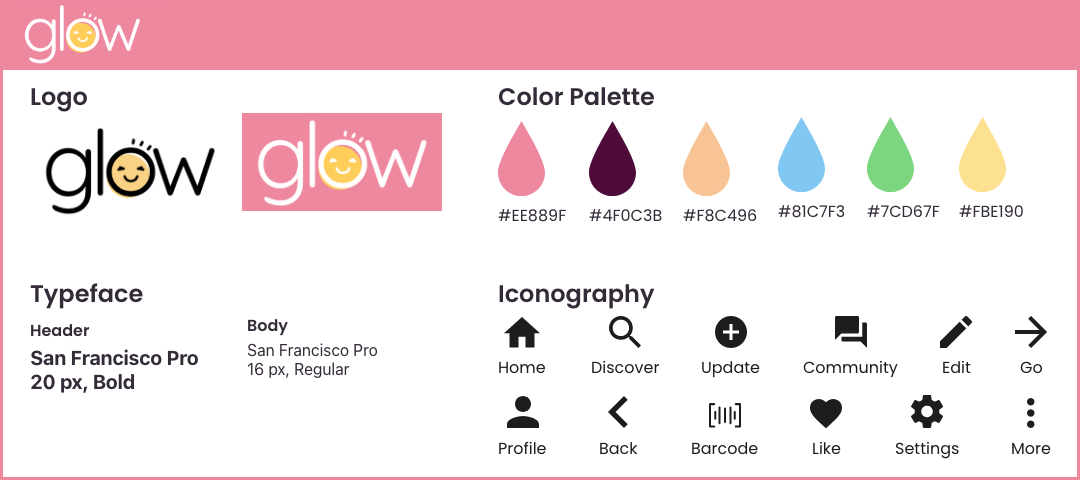As a result, I defined three specific features that would have a high impact on the app to create a more fluid user flow and create the Minimal Viable Product (MVP): learning about acne and the causes behind it, establishing a routine, and tracking the user journey.
In addition, I heard three recurring concerns throughout my interviews:

This led me to prioritize the three important components for my app as seen in my Design & Solutions section:
- An innovative way for users to track their progress using the product
- Positive language in the product to increase their confidence
- A built-in analysis to decrease the amount of time to get to the optimal routine
Designing & Testing
Going from sketches to digital wireframes.
With paper wireframes, I guerilla tested 5 participants to see how easily they could navigate through Glow with three given scenarios:

After testing my initial prototype, I went back to the drawing board to reiterate my wireframes.
I initially wanted to make the onboarding process shorter because I understand people don’t enjoy filling out long forms. In this case, however, I discovered the users were okay with filling out the longer form because the analysis would be more accurate and comprehensive in the end.
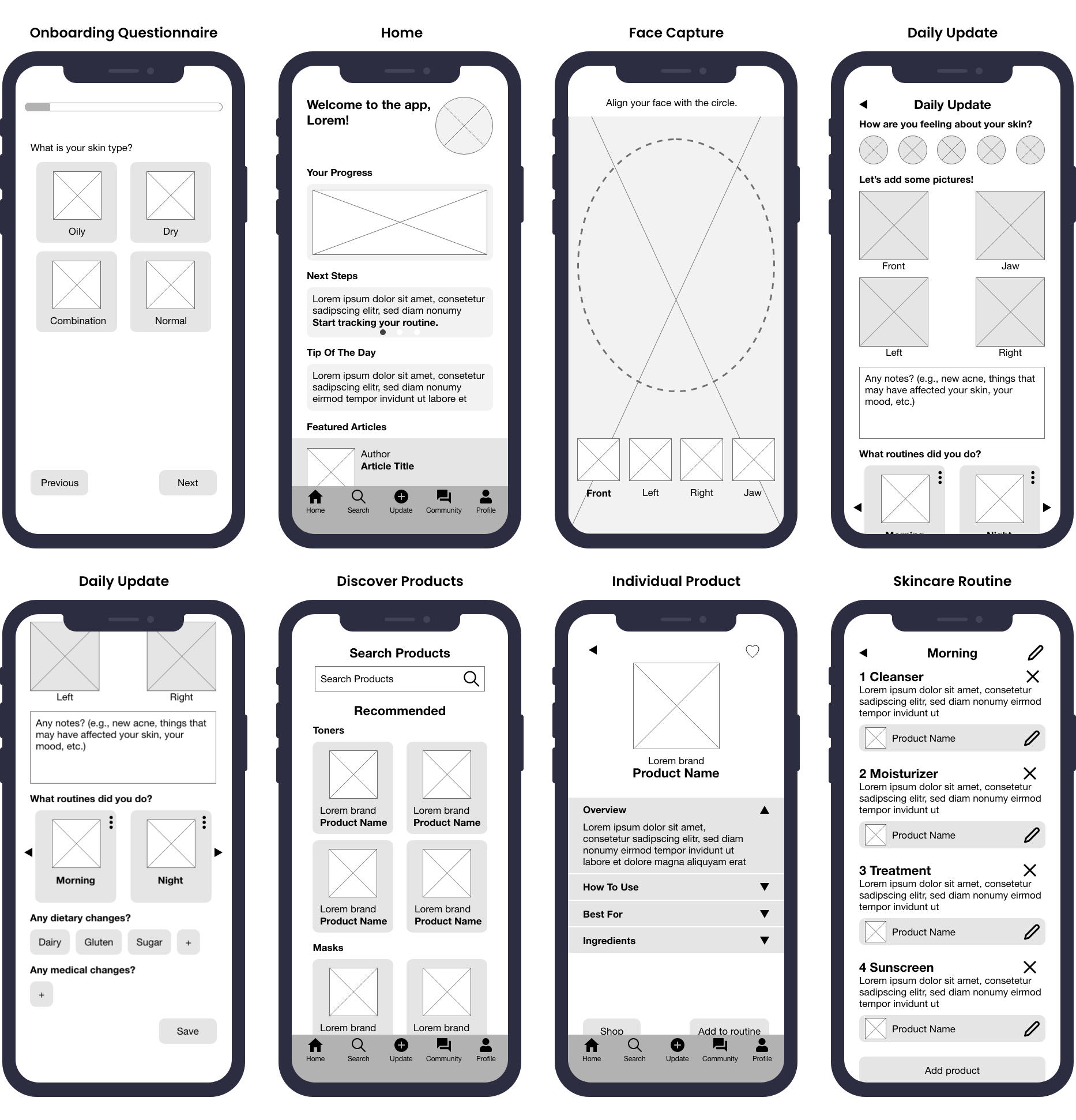
Users also suggested some questions I could add that could increase accuracy in determining causes and solutions for their acne. “Obvious” or irrelevant questions that didn’t contribute to having healthy skin were eliminated. Questions were also rearranged to follow a more logical order.
Some thought the daily update portion could benefit from having more sections to add in detailed information, such as what medications they were taking or their diet.
It was also difficult for users to manually take pictures of themselves to track their skin improvement. To alleviate this problem, the picture-taking screen was changed to a Face ID inspired photo capture, which the app would automatically take pictures when users rotated their face.
Going from wireframes to high-fidelity prototype.
Using the same scenarios, I did two more rounds of user testing with 10 participants total. For the final iterations, there were two major feedbacks.

